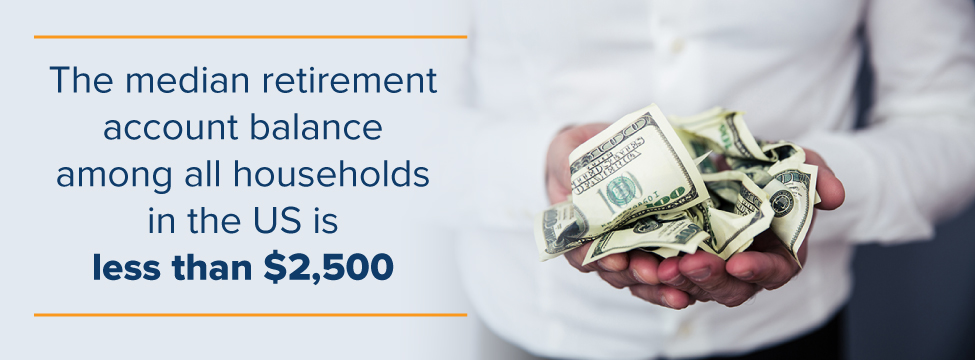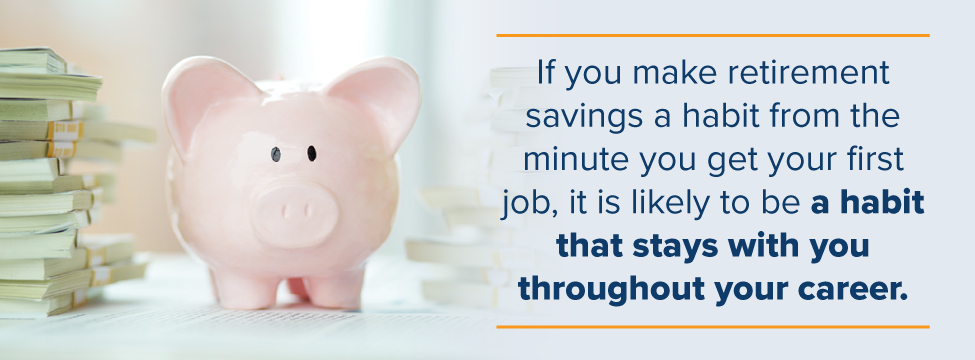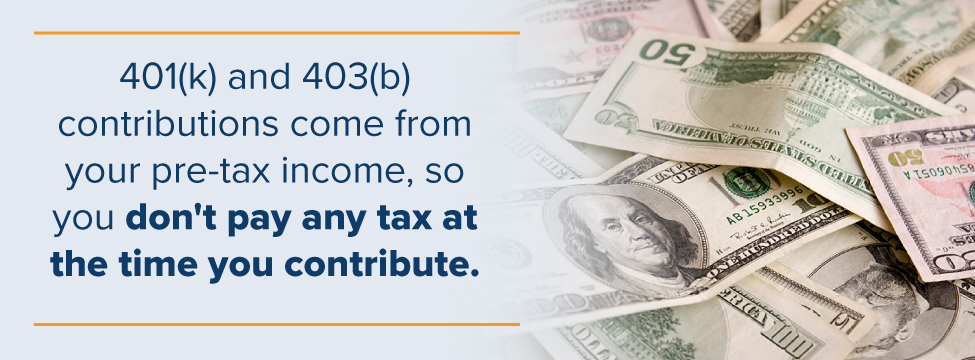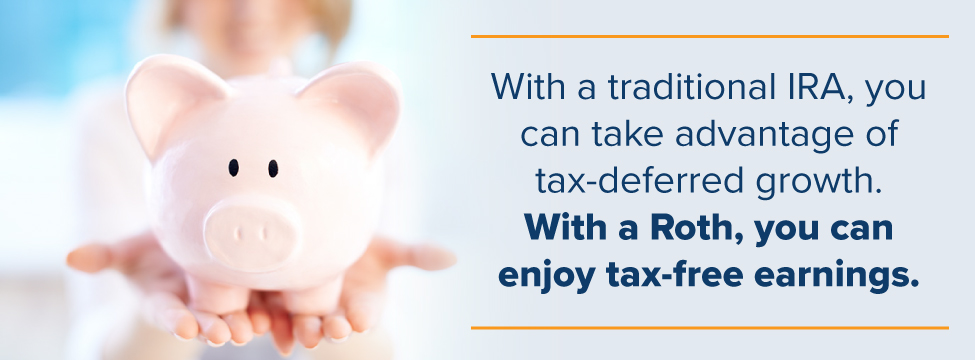Why It’s Important to Talk About Retirement in Your 20’s

When you’ve just landed your first job or are just beginning your career, retirement might be the furthest thing from your mind. After all, it’s at least 40 years away. But your 20s are an ideal time to start thinking about and preparing for retirement.
The median retirement account balance among all households in the US is less than $2,500, according to a 2017 report from the National Institute on Retirement Security. That same report found that 82 percent of Millennials believe that the country is facing a retirement crisis, meaning that many people won’t have enough money to support themselves during their retirement years.
Some of the factors that determine whether you will have a comfortable retirement might be beyond your control, such as access to Social Security payments or a pension. But that doesn’t mean you’re powerless to help yourself. If you start saving and planning from a young age, you can help ensure that you have a more financially secure retirement.

5 Reasons to Start Planning for Your Retirement Today
Retirement might be decades and decades away, but there are several reasons why it makes sense to get a jump start on preparing for retirement. Ideally, you’ll start saving when you get your first job, even if you aren’t making very much. Here are a few reasons why starting to save early is better when it comes to retirement preparation.
1. Take Advantage of Compound Interest
One significant benefit of early retirement preparation is that it gives your money plenty of time to grow. Because of compound interest, you can save less money earlier on and have it be worth more at retirement than if you start saving later and end up saving more.
For example, you start saving $200 per month at age 25 and continue to save until you are 65. You’ll have saved $96,000 for retirement. If your money has a rate of return of 6 percent, you’ll end up with $400,000. In contrast, if you start saving $200 per month at age 35 and continue until you’re 65, you’ll end up saving $72,000. With that same rate of return, you’ll end up with just with just $200,000.
2. Get in the Habit of Saving
Plenty of people struggle to save for retirement, either in their 20s or later in life because they have a hard time getting used to the idea of saving money or have difficulty creating a saving habit. Humans are creatures of habit, meaning that they tend to do the same things over and over, and it’s difficult for them to change course or try something new.
If you make retirement savings a habit from the minute you get your first job, it is likely to be a habit that stays with you throughout your career. Decide what amount you want to have deducted from your paycheck into your employer’s retirement plan right away. When you hand over your hiring paperwork to human resources, be sure to fill out any forms about the retirement plan.
Remember that you don’t have to save a lot in those early years, especially if you’ve got student loans to pay off or if you’re not earning the highest salary. Even if you save only one or two percent of each paycheck, you’re still laying the groundwork for a lifelong habit.
What can you do if your employer doesn’t offer a 401(k) or another retirement plan? Open an individual retirement arrangement (IRA). Set up automatic payments into the account, so that every time you get paid at work, a percentage of your paycheck gets sent to your IRA.

3. Lower Your Taxes Now
Contributions you make to a 401(k) or other employer-sponsored retirement or a traditional IRA are pre-tax contributions. That means you don’t have to pay income tax on them. Your 401(k) contributions get deducted from your paycheck before tax is taken out. If you put money into a traditional IRA, you can deduct the full amount for the year when you complete your tax return.
Contributing to retirement in your 20s can help you enjoy a lower tax bill during a time when you might need all the extra income you can get. You can use your tax savings to pay off any student loans or to start saving for other financial goals.
4. Maximize Your Employer Match
Some companies offer to match the retirement contributions made by employees, up to a certain percentage of income. So if your employer offers to match five percent of your salary annually, the company is essentially giving you a five percent bonus each year, but only if you contribute that same amount. You can contribute more than the match value if you want.
The one drawback of having an employer match your contributions is that you usually need to work at a company for a certain number of years before you can take advantage of the match. For example, your employer might require you to work there for at least two or three years. If you leave before that, you can keep whatever contributions you made to the retirement account.
5. Give Your Account a Chance to Bounce Back from Market Dips
Whether you invest in stocks, mutual funds or bonds, the market has its ups and downs. Unless you put your retirement savings into a certificate of deposit (CD) or savings account, there’s always some risk that your account will lose value.
Having the market drop or experiencing a recession when you’re in your 20s isn’t exactly fun. But it does mean that you have plenty of years to ride out the drop and for your account to regain value. You’ll also get to take advantage of the classic advice to “buy low,” which can further help you. As the market recovers, you’ll be able to enjoy a decent return.
Know Your Retirement Options
If you’re going to start saving for retirement, where should your money go? While a savings account can be an excellent choice for any money you’re setting aside for a short term goal, it’s usually not the best pick for retirement, because of the low rate of return.
The retirement account options available to you will depend in part on your job and how much you earn. Here’s a list of the most common options:
- 401(k)/403(b): Many employers offer employees a 401(k) plan. Some non-profit companies offer a 403(b), which is a very similar type of plan. As of 2017, you’re able to contribute up to $18,000 per year to a 401(k) or 403(b). The contributions come from your pre-tax income, so you don’t pay any tax at the time you contribute. You do pay tax on your earnings and original savings in retirement.
- Traditional IRA: A traditional IRA lets you set aside up to $5,550 per year into a retirement account owned by you. You can have a traditional IRA as long as you have some form of earned income. The money you contribute to the account is pre-tax, like the contributions you might make to a 401(k). If your employer offers a retirement plan, you need to earn less than a certain amount to make tax-deductible contributions to a traditional IRA.
- Roth IRA: A Roth IRA is like a traditional IRA, except the money you put in it is after tax. That means you don’t have to pay tax on the original contribution or the earnings when you withdraw funds during retirement.
- Simple IRA: Some smaller employers might offer a Simple IRA rather than a 401(k) plan. With a Simple IRA, your employer is required to make contributions to the account. You can also contribute. The limit for a Simple IRA is higher than for other IRAs.
- SEP IRA: Although very small businesses might offer SEP IRA plans, this option is most popular with self-employed individuals. If you are self-employed and have a SEP IRA, you can contribute up to 25 percent of your income to the plan. If you work for an employer that offers a SEP IRA, your employer can contribute up to 25 percent of your salary. As an employee, you don’t make any contributions to a SEP IRA.
- Solo 401(k): A solo 401(k) is also known as a one-participant 401(k) plan. Like a SEP IRA, it’s a retirement savings option for people who are self-employed. With a solo 401(k), you are both the employer and the employee so that you can contribute up to $18,000 per year of your income and as well as non-elective contributions as the employer.

How to Start Preparing for Retirement
Knowing why you should prepare for retirement and preparing for retirement are two different things. Here’s what you need to do to kickstart your retirement preparation.
1. Contribute to Your Employer-Sponsored Plan
If your employer offers a 401(k) or another plan, there’s no reason not to contribute to it as soon as you can, especially if your company matches contributions. Make a date with HR and find out what you need to do to have some portion of your paycheck sent to a retirement plan.
Don’t worry if you can’t contribute a lot right now. Even chipping in one or two percent of income is a good way to get started. You can always increase your contribution as your income increases.
2. Contribute to a Traditional or Roth IRA
If you want to set aside even more for retirement, consider opening a traditional or a Roth IRA. Which one is the better option for you depends on several factors. With a traditional IRA, you can take advantage of tax-deferred growth. With a Roth, you can enjoy tax-free earnings. But there are income limits and rules for either option.
3. Pay Attention to Fees
The fees charged by mutual fund managers and other investment firms might seem low, usually around two or one percent or even less. But those fees add up. If you invest $1,000 per month in a fund with a return of six percent and a fee of 1.3 percent annually for 30 years, you can end up with $716,000. But if you invested that same amount for the same length of time in an account with a fee of just 0.5 percent, you would end up with $874,000.
When it comes to expense ratios and fees, the lower, the better. If you don’t know what a fee is or what it means for your savings, don’t be afraid to ask the administrator of your retirement plan.
4. Pay Down Any Debts
Paying off your debts, if you have any, might not seem like it has much to do with retirement. But the sooner you pay off your debts, the sooner you can start setting aside more money for retirement. Focus on the debt that has the highest interest rate first, such as credit card debt.
5. Ask for a Raise
The more you earn, the more you can set aside for retirement. But getting a pay boost early in your career doesn’t just help your cash flow. It can also influence your income trajectory for the rest of your career. According to a report from the New York Federal Reserve, people tend to see the highest rate of income growth during the first decade of their career, between ages 25 and 35.
If you’re in the process of getting your first job, don’t be afraid to negotiate a higher salary. A 2010 study from Temple University and George Mason University found that employees who negotiated during the offer stage boosted their initial salaries by $5,000 on average. The employees with a higher starting salary tended to earn $600,000 more over their careers than those who didn’t negotiate.

Tips to Help You Save
When you look at how much you might need to retire comfortably, four or five decades from now, that number might seem insurmountable. But when you get an early start on retirement preparation, your future self will thank you. These tips will help you get going.
- Start small. It’s alright to start small. They didn’t build Rome in a day, so don’t worry if it takes you years to build up your retirement nest egg. If you can only save a small amount at first, maybe $50 per month, that’s fine. Just remember to boost your contributions as your income increases.
- Automate your contributions. Set your contributions and (pretty much) forget them. If you never see the money in your paycheck, you’ll never realize it was there to spend. Even if you don’t have a retirement plan from your employer, you can still automate savings contributions to an IRA.
- Check in on your plan every few months. Every quarter or semi-annually, check in with your retirement contributions. Ask yourself if you can increase your contributions, for example. You might also want to speak with a financial professional who specializes in retirement to find out what else you can do to get a head start on your retirement preparation.
If you are looking to open a retirement account, either to supplement an employer-sponsored plan or to make up for lack of a plan at work, contact Mid Penn Bank to learn more.
Share:
Disclosures
The material on this site was created for educational purposes. It is not intended to be and should not be treated as legal, tax, investment, accounting, or other professional advice.
Securities and Insurance Products:
NOT A DEPOSIT | NOT FDIC INSURED | NOT BANK GUARANTEED | NOT INSURED BY ANY FEDERAL GOVERNMENT AGENCY | MAY LOSE VALUE
